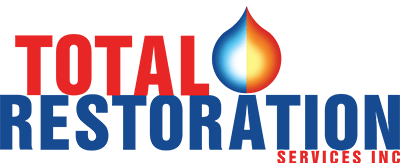Tips From A Restoration Company For Returning After A Fire
Returning home after being evacuated due to a fire can be an overwhelming experience, both emotionally and practically. Here are some tips from a restoration company to help you navigate the process and ensure a safe and smooth return:
- Safety First
- Before entering your home, ensure that local authorities have given the all-clear to return.
- Wear appropriate protective gear, such as masks, gloves, and sturdy footwear, to minimize exposure to potential hazards like smoke residue or debris.
- Assessment
- Inspect the exterior of your home for any visible damage. Look for signs of structural compromise, like sagging roofs or walls.
- Carefully check for smoke or fire damage. Even if flames didn't directly reach your home, smoke can cause significant damage. Assess the condition of your home before bringing pets back inside. Vacuum and clean floors & horizontal surfaces to remove fire contaminants before allowing pets, children, and anyone with health problems to enter.
- Utilities and Services
- Do not attempt to turn on utilities (gas, electricity, water) until professionals have inspected and cleared them.
- Contact utility companies to conduct safety checks and re-establish services.
- Document Damage
- Take photos and videos of all damaged areas. These will be important for insurance claims and working with restoration professionals.
- Take photos and videos of all damaged areas. These will be important for insurance claims and working with restoration professionals.
- Contact Your Insurance
- Notify your insurance company about the situation as soon as possible.
- Document all communication with your insurance company, including claim numbers and contact information.
- Professional Assessment
- Arrange for a Certified Fire & Smoke Restoration Company to assess the extent of the damage. They can provide a detailed report and plan for restoration efforts.
- Arrange for a Certified Fire & Smoke Restoration Company to assess the extent of the damage. They can provide a detailed report and plan for restoration efforts.
- Mitigation
- Start mitigation measures as soon as possible to prevent further damage. This might include tarping roofs, boarding up damaged windows or changing your furnace filter, vacuuming floors and horizontal surfaces, and setting up air purifiers.
- Start mitigation measures as soon as possible to prevent further damage. This might include tarping roofs, boarding up damaged windows or changing your furnace filter, vacuuming floors and horizontal surfaces, and setting up air purifiers.
- Health Concerns
- Be cautious of air quality and potential health risks. If the air smells smoky or you experience respiratory issues, limit exposure, and wear a mask.
- Be cautious of air quality and potential health risks. If the air smells smoky or you experience respiratory issues, limit exposure, and wear a mask.
- Clean-Up and Restoration
- Work closely with your chosen restoration company to prioritize tasks. They'll likely focus on removing debris, cleaning, and restoring salvageable items.
- Dispose of items that are beyond repair, particularly those with strong smoke odor.
- Personal Belongings
- Clean and sanitize items you plan to keep. Soft materials like fabric and upholstery may need special attention.
- Clothing and linens may benefit from professional dry cleaning to remove smoke odor.
- Structural Repairs
- Follow the recommendations of structural engineers and restoration professionals for repairs. This might involve rebuilding damaged sections of your home.
- Follow the recommendations of structural engineers and restoration professionals for repairs. This might involve rebuilding damaged sections of your home.
- Emotional Support
- Returning to a fire-damaged home can be emotionally taxing. Seek support from friends, family, or mental health professionals if needed.
- Returning to a fire-damaged home can be emotionally taxing. Seek support from friends, family, or mental health professionals if needed.
- Prevention for the Future
- Take this opportunity to review your emergency preparedness plans and make any necessary updates.
- Consider fire-resistant landscaping and materials for future home improvements.
Remember that the restoration process can take time, and patience is key. By working closely with professionals and following safety protocols, you can successfully navigate the aftermath of a fire and restore your home to a safe and habitable condition.
